I often see the quote “What if I fall? Oh, but my darling, what if you fly?” used as a caption on various social media outlets, usually underneath a photo of an adorable little human, and posted by a proud mama who wants nothing less than the world for her child. Every time I see this quote it gets me thinking about how whimsical and beautiful it sounds in theory, as words on a page often do, but what is the real world manifestation of this, and what does it mean for our children? Do we, as a society, value the ability of flight that comes from letting our children engage in risk taking play behaviors, or have we become too afraid of letting them fall?
I grew up in a household where I was allowed to wander around the sewers with my friends, we climbed huge mountains of rocks and collected the best ones from construction sites, we played in the gutters while it rained, climbed tress as high as we could, and rode our bikes as fast as possible, with no hands of course (and in my case falling off and knocking out my two front teeth). We chased each other, wrestled, and jumped off the high dive even when were terrified to do so. It was all always worth the risk. These forms of risky play are so very important to the development of young children.
From an evolutionary perspective this type of play has proven to be invaluable, and teaches children an infinite amount of important things. Their bodies grow and adapt to learning new physical skills as they build with new materials, learn how to use a hammer, whittle with a knife, or utilize rarely used muscle groups while climbing a tree.
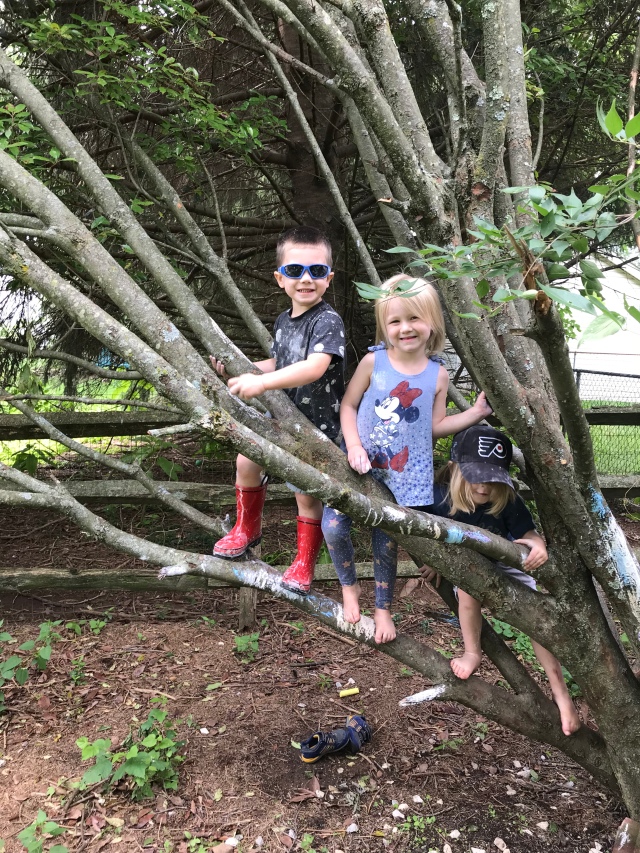 They learn how to regulate their emotions when something doesn’t go their way, or they get hurt while playing rough. For example, during rough and tumble play (which I let my childcare kids engage in, though I know most providers don’t), if one child gets hurt accidently they may become angry. However, they know that in order to continue the fun they were having they must be able to overcome that anger. If they decide to lash out and retaliate, the play is over. If they can learn how to deal with that anger (usually with my help) in a constructive way, the fun can continue.
They learn how to regulate their emotions when something doesn’t go their way, or they get hurt while playing rough. For example, during rough and tumble play (which I let my childcare kids engage in, though I know most providers don’t), if one child gets hurt accidently they may become angry. However, they know that in order to continue the fun they were having they must be able to overcome that anger. If they decide to lash out and retaliate, the play is over. If they can learn how to deal with that anger (usually with my help) in a constructive way, the fun can continue.
They learn how to work together and manage a situation in order to find the safest way to achieve their goal. I see this taking place every single time I take the kids to play in the nearby creek. We go over the rules, and they become the most helpful and responsible friends and siblings. They help each other over larger rocks, they call out warnings such as “be careful right there Yards, that was a slippery one!”. They learn about the powerful rush of water in certain spots, and stop to take notice of how when the water goes faster its more difficult for them to move through it, versus where the water is slower. 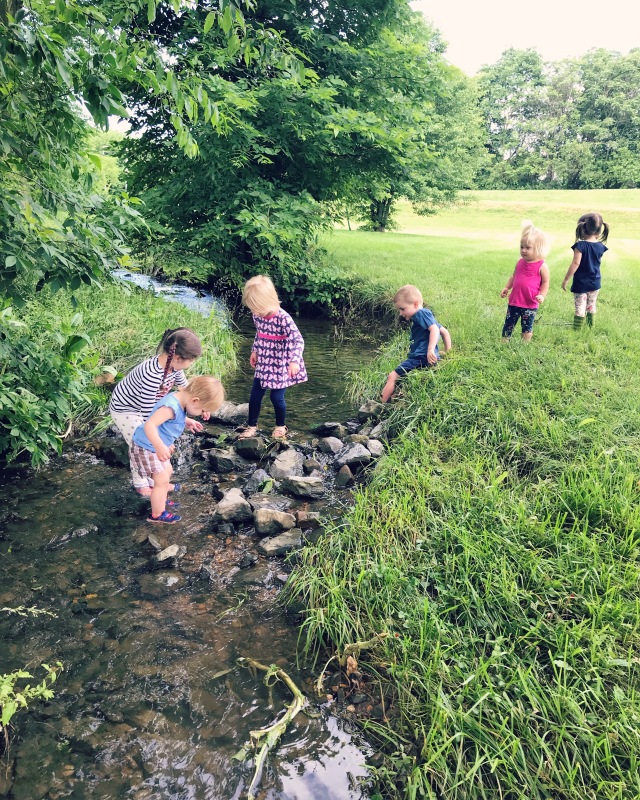
Last week I tore out some old stones from my garden bed and decided to break them up into smaller pieces to see if the kids would be interested in building with them (which of course they were). I had three different adults say to me “Arent those too heavy for them?”, “What if they drop them?”, “What if they trip over them while trying to carry one?”. These are all valid questions, and of course we all want to keep our kids as safe as possible, but they NEED to be able to have experiences where they are able to push their abilities to new levels, which is exactly what they did.
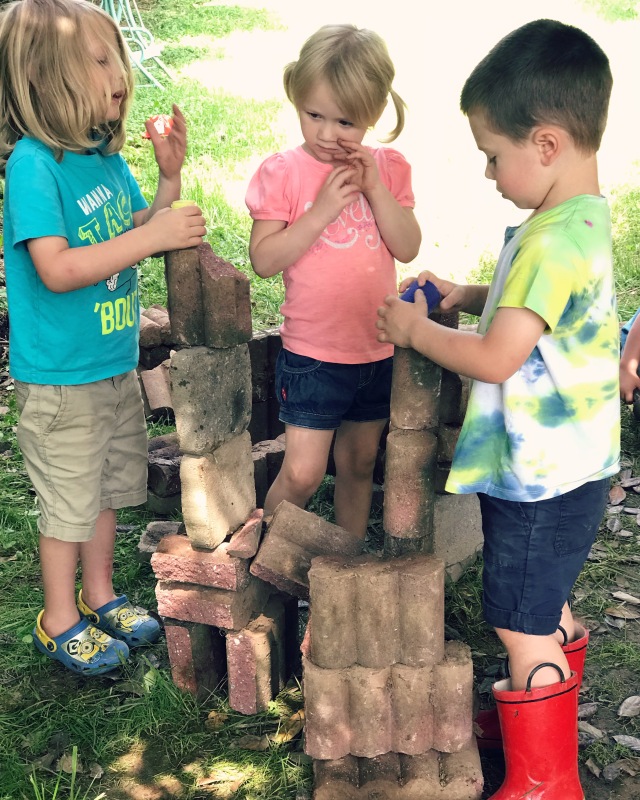
They never cease to amaze me with their capabilities, and this time was no different. I asked them to sit down, explained to them that these stones are very heavy and that they need to lift them slowly and place them down slowly. I told them they had to wear shoes and that if they felt one of the stones was too heavy for them that I would come grab it from them. I told them that they need to focus and be very careful while piling them, and that if one of the toddlers started walking around them, they had to stop until I moved them.
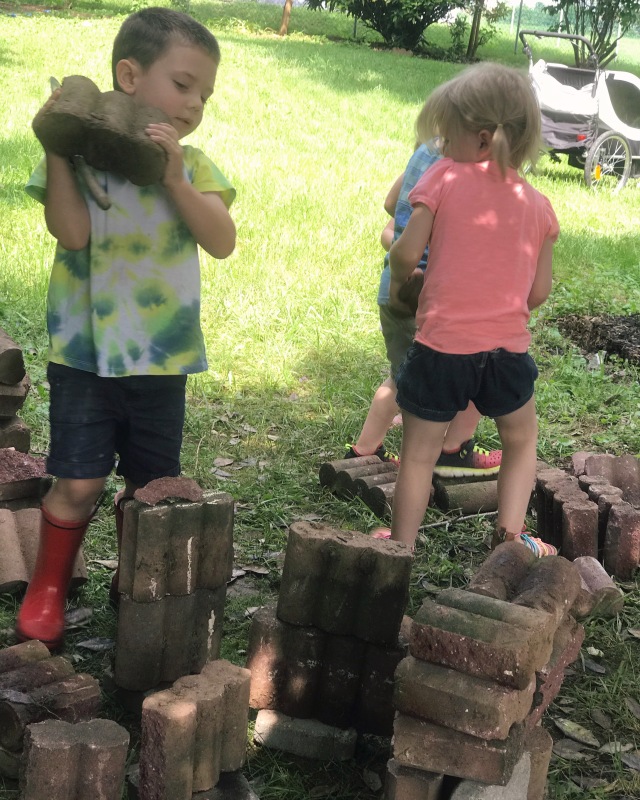
They followed every single one of these rules with laser like precision. I was bursting with pride at how even my most easily distracted child was able to focus, and place each brick perfectly in its place. They were also beaming with pride as they showed me their carefully constructed castles. It mean so much to them that they were able to take on this adult-like task. They told me all about how they were strong construction workers, how they would use the concrete to hold their castles together, and they praised the work of their friends. It was truly a wonderful thing to watch.
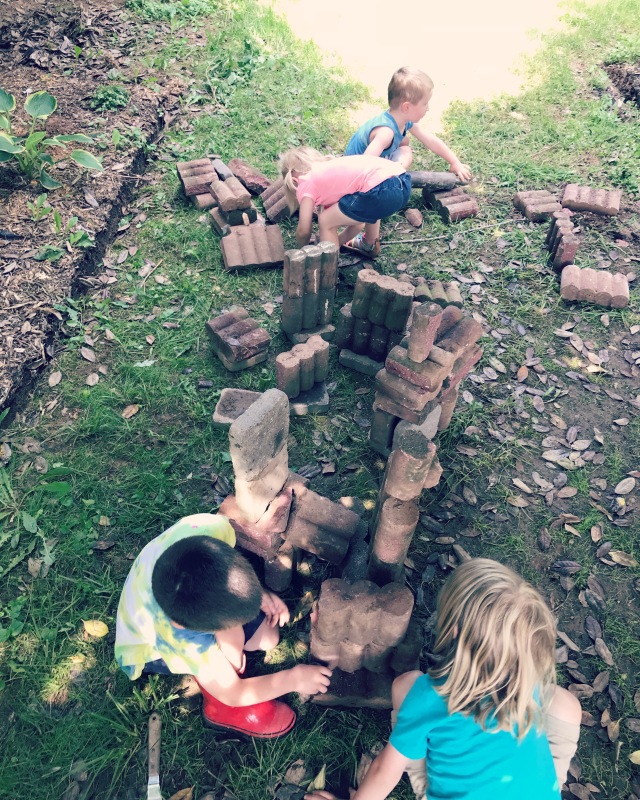
Unfortunately though, I believe this kind of play is allowed less and less. As a society I believe that we are beginning to see the harmful consequences of play deprivation. “Over the past 60 years we have witnessed, a continuous, gradual, but ultimately dramatic decline in children’s opportunities to play freely, without adult control, and especially in their opportunities to play in risky ways. Over the same 60 years we have also witnessed a continuous, gradual, but ultimately dramatic increase in all sorts of mental disorders, especially emotional disorders, in children. When you look back at the six categories of risky play (great heights, rapid speeds, dangerous tools, dangerous elements, rough and tumble, and disappearing/getting lost) in the 1950s, even young children regularly played in all of these ways, and adults expected and permitted such play. Now parents who allowed such play would likely be accused of negligence, by their neighbors, if not by state authorities.” (Peter Gray PHD-Psychology Today)
While we may not be able to draw a direct connection between the lack of play and emotional disorders, there have been studies conducted on both rats and monkeys that would lead one to believe that there must be some correlation.
“Researchers have devised ways to deprive young rats of play, during a critical phase of their development, without depriving them of other social experiences. Rats raised in this way grow up emotionally crippled. When placed in a novel environment, they overact with fear and fail to adapt and explore as a normal rat would. When placed with an unfamiliar peer, they may alternate between freezing in fear and lashing out with inappropriate, ineffective, aggression. In earlier experiments, similar findings occurred when young monkeys were deprived of play (though the controls in those experiments were not as good as in the subsequent rat experiments). Such findings have contributed to the emotion regulation theory of play—the theory that one of play’s major functions is to teach young mammals how to regulate fear and anger. In risky play, youngsters dose themselves with manageable quantities of fear and practice keeping their heads and behaving adaptively while experiencing that fear. They learn that they can manage their fear, overcome it, and come out alive.” (Psychology Today)
Research has continuously shown that risky play (within reason) is of the utmost importance and I would urge parents, caretakers, and providers to research the benefits, and watch in amazement at what your children are capable of when they are given the freedom to play.













